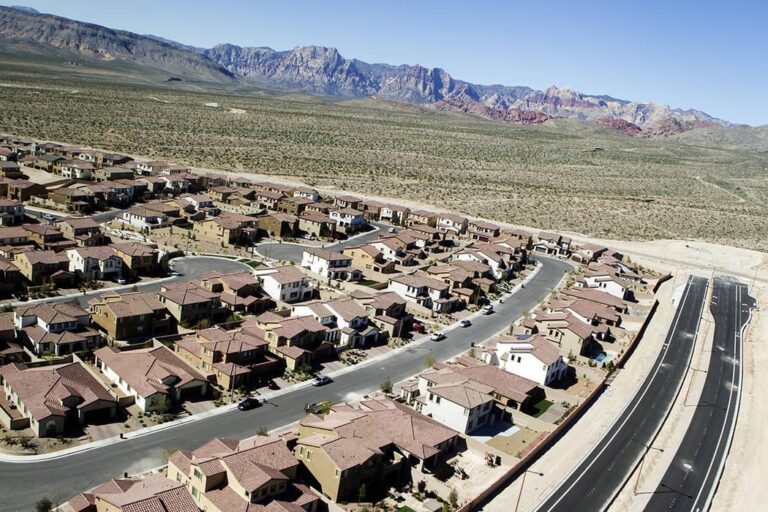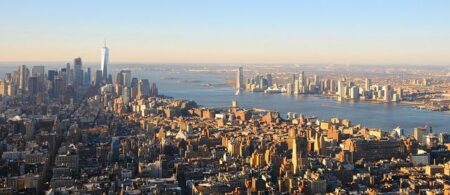Unveiling the Hidden Struggles of Poverty in Las Vegas
Beyond the dazzling neon glow and the world-renowned casinos of Las Vegas lies a less visible realityŌĆöa city wrestling with persistent poverty and social inequities. While the Strip captivates millions with its promise of luxury and nonstop entertainment, many locals endure financial instability, homelessness, and limited access to vital resources. This article explores the concealed hardships behind Las VegasŌĆÖs glamorous exterior,shedding light on the widening economic gap shadowing this famed entertainment hub.
Las Vegas: A City of Contrasts Between Wealth and Hardship
Amid the shining lights and bustling energy of Las VegasŌĆÖs central districts, a stark socioeconomic divide persists, frequently enough unnoticed by visitors. While the Strip thrives as a symbol of opulence,surrounding neighborhoods reveal a troubling rise in homelessness,food insecurity,and substandard housing conditions.Advocates stress that the booming hospitality sector, which fuels the cityŌĆÖs economy, rarely translates into improved living standards for the workers who sustain it.
Recent data paints a vivid picture of these disparities within just a mile of the Strip:
| Indicator | Strip Vicinity | Adjacent Underserved Areas |
|---|---|---|
| Median Household Income | $58,000 | $24,500 |
| Unemployment Rate | 6.2% | 15.1% |
| Homeless Population | 230 | 1,300+ |
Community advocates call for comprehensive strategies including:
- Development of affordable housing to curb displacement
- Expansion of mental health and addiction support services
- Job training initiatives designed to foster sustainable employment
Invisible Battles: Homelessness and Economic Insecurity in the Shadow of the Strip
Behind the StripŌĆÖs vibrant nightlife, thousands of residents face daily struggles that remain unseen by tourists and gamblers. Many contend with unstable housing, limited healthcare access, and scarce job opportunities.The cityŌĆÖs reliance on hospitality jobs, often seasonal and low-paying, leaves many workers vulnerable to economic fluctuations. Outreach organizations report a steady increase in homelessness, with many individuals forced to live in makeshift encampments hidden from the tourist gaze.
- Unemployment rates in certain neighborhoods far exceed national averages.
- Affordable housing supply has not kept pace with population growth, intensifying the crisis.
- Rising mental health and substance abuse cases complicate outreach and support efforts.
| Issue | Effect | Recent Data |
|---|---|---|
| At-Risk Population | Homelessness | Approximately 7,800 (2024) |
| Median Rent Growth | Housing Affordability | Increased 17% as 2020 |
| Mental Health Resources | Service Shortages | 1 counselor per 420 residents |
Leaders in the community highlight that the cityŌĆÖs glittering image frequently enough conceals systemic issues demanding urgent, multifaceted solutions. While nonprofits and government programs strive to provide emergency shelter and rehabilitation, funding limitations frequently restrict their effectiveness. This stark contrast between Las VegasŌĆÖs allure and the hardships faced by many residents underscores the need for broad social reforms and increased public awareness.
Structural Barriers Fueling Economic Inequality in Las Vegas
Las VegasŌĆÖs identity as a global entertainment capital masks deep-rooted economic challenges shaped by systemic factors. The cityŌĆÖs heavy dependence on the hospitality and service sectorsŌĆöcharacterized by seasonal work, low wages, and minimal career advancementŌĆöperpetuates cycles of poverty. Minority populations and those lacking access to quality education or affordable housing bear the brunt of these disparities. Furthermore, the absence of a diversified economic base limits opportunities for stable, well-paying employment, creating notable obstacles to upward mobility.
Urban development patterns have further entrenched these divides. Infrastructure projects often reinforce segregation, while inadequate public transportation restricts access to jobs, healthcare, and education for low-income residents. Additional systemic challenges include:
- Underfunded public schools that hinder skill acquisition
- Predatory lending practices that obstruct homeownership
- Insufficient support for small businesses in marginalized communities
| Challenge | Outcome |
|---|---|
| Dependence on Service Industry | Income instability and limited benefits |
| Inadequate Public Transit | Restricted access to employment and services |
| Educational Disparities | Skill gaps and reduced earning potential |
These intertwined factors institutionalize economic hardship for many residents, challenging policymakers to devise inclusive strategies that promote equitable growth.
Strategies for Change: Community Efforts and Policy Proposals
The glaring contrast between Las VegasŌĆÖs luminous Strip and its underserved neighborhoods demands proactive, community-led solutions. Local organizations are spearheading initiatives focused on affordable housing, workforce development, and mental health support to uplift vulnerable populations. Partnerships among nonprofits, government agencies, and private enterprises aim to implement sustainable programs that address both immediate needs and long-term economic empowerment.
Policy analysts recommend targeted reforms, urging city leaders to prioritize measures that foster inclusive growth. Key proposals include:
- Boosting investment in public transportation to enhance connectivity for low-income communities.
- Introducing rent stabilization policies to protect residents from displacement amid rising housing costs.
- Expanding vocational training programs aligned with emerging sectors in the region.
- Strengthening social safety nets encompassing healthcare access and food security.
| Program | Projected Outcome | Implementation Timeline |
|---|---|---|
| Affordable Housing Initiative | Increase affordable housing stock by 15% | 3 years |
| Workforce Development Grants | Support 600+ residents annually | Ongoing |
| Mental Health Expansion | Improve service access by 25% | 18 months |
Conclusion: Bridging the Divide in Las Vegas
Behind the spectacle of Las VegasŌĆÖs neon-lit entertainment lies a complex reality marked by entrenched poverty and social challenges. This exploration reveals that beneath the cityŌĆÖs celebrated glamour, many residents face homelessness, economic instability, and systemic neglect. Addressing these issues requires not only acknowledgment but a concerted effort from government,businesses,and the community.The narrative of Las Vegas is one of resilience amid adversityŌĆöa duality that calls for sustained attention and action as the city charts its future.




